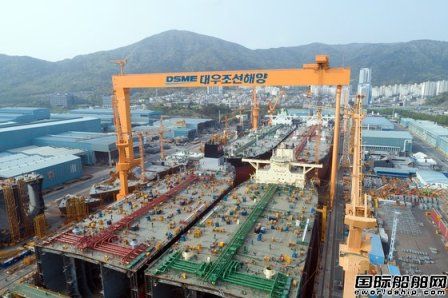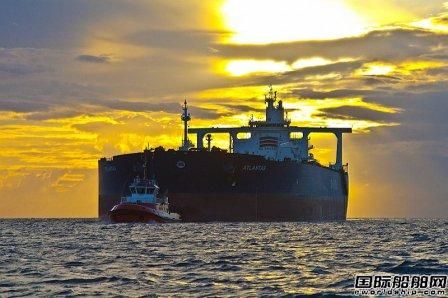
Current Location’╝ÜHome - News - Industry

|
|||
| Published’╝Ü2021.10.13 News Sources’╝ÜQingdao Gute Ship Supplies Co., Ltd. Views’╝Ü | |||
|
A record 150 orders! Oil tankers or the next market boom?
150! Oil tanker orders in the first eight months hit a six-year high More than 150 tanker orders (25,000 DWT and above) have been confirmed in the first eight months, nearly matching the 165 orders for the whole of 2020, according to shipbroker Gibson. Nearly half of the orders were for MR vessels, which have already surpassed last year's level. In contrast, new orders for VLCC, Avra /LR2 vessels are slightly below last year's levels, while Suez vessels are in the cold of the market, with 15 new orders less than half of last year. Gibson said the price of new tankers has risen 15 percent to 25 percent since December, despite rising ship prices, a very weak tanker market and concerns about the outlook for oil demand. Affinity (Shipping), another ship broker, came to a similar conclusion, saying August was the first month since April 2016 without any new orders for tankers, but the lull did not prevent the first eight months of the year seeing the highest cumulative order book for tankers for the same period since 2015. According to the statistics of Affinity (Shipping), in the first eight months of this year, a total of 143 tankers were ordered, among which MR vessels accounted for the largest part, a total of 57 vessels; Avra ships followed with 35; VLCC ranked third with 32 ships. In addition, there were 13 orders for Suez and 16 orders for Agile, while there were no new orders for The Panamax /LR1 segment. According to Affinity, the total number of tanker orders held at the end of August totalled 53 million DWT, or about 8.6 percent of the existing fleet capacity, comprising 135 MR, 109 Avra, 77 VLCC, 59 Suez, 25 Easy and five Panamax vessels. 
The market for new tankers has had a strong start to the year, with orders for new vessels reaching 11m DWT in the first three months, up 3.63m DWT on the same period last year, according to British shipbroker SSY. Orders fell to about 700 DWT in the second quarter, but were still above the 5.63 million DWT quarterly average between 2016 and 2020. Oil tanker orders reached 18.08 million DWT in the first half of the year, the highest since 2015. Entering the third quarter, tanker orders slowed further. For the industry itself, however, handheld orders remain constrained despite an increase in new orders and limited dismantling activity, with Avra and VLCC handheld orders accounting for just over 10 percent of the fleet, Suez 9.2 percent and MR 8.8 percent, Gibson said. Orders for the Handy, Panamax and LR1 handhelds are low, mainly due to owners' preference for MR and LR2. Weak tanker market, NEW IMO rules will speed up phasing out of inefficient tankers In contrast to the booming new shipbuilding market, the tanker market has remained sluggish this year. At the start of the year, the consensus was that a surge in oil demand over the summer would boost tanker revenues, but with OPEC+ still limiting production, too many ships and too few cargoes have kept tanker rates low and carriers have been shipping crude at a loss for much of the year. Peter Sand, chief shipping analyst at the Baltic and International Chamber of Shipping (BIMCO), predicted that the global tanker market would continue to face low yields in the next 12 months as the pandemic and uneven vaccine distribution disrupted crude oil demand and oil producers continued to limit production. "The most likely scenario is... Over the next year, VLCC will average less than $25,000 a day." Since last year, the tanker market has experienced a roller coaster of ups and downs. In March last year, after the breakdown of OPEC+ negotiations, Saudi Arabia launched a price war and international oil prices plunged, which boosted the demand for offshore floating storage oil. VLCC spot freight and term rental prices began to soar, once rising by more than 60% compared with the beginning of the year. In May of the same year, when the OPEC+ production cut agreement took effect and global crude oil demand decreased due to the epidemic, tanker earnings fell back, and VLCC earnings at one point plunged nearly 80% within nine days. In July last year, due to the impact of China's increased crude oil imports, the increase in global charter inquiries and other factors, tanker freight prices recovered, VLCC revenue rose more than 50% in a week. Subsequently, the tanker market continued to weaken against the backdrop of the impact of the pandemic and the overall decline in crude oil demand, with average global VLCC daily earnings falling to $11,400 in November, less than one-twentieth of the peak of $250,000 in March. 
At present, the daily revenue of VLCC is about $10,000. Noting that the novel Coronavirus mutation and outbreak had limited tanker demand growth, Sand said: "We need to see the outbreak under control before we can really see a firm phase of recovery." However, some analysts believe that the recent rise in VLCC rents let tanker owners see the bottom of the market rebound "dawn". Intermodal, a shipbroker, forecast an increase in demand for crude in the fourth quarter, boosting the tanker market. Fearnley Securities, a Norwegian investment bank, also noted that "there is finally some real optimism in the tanker market with rising rents". Fearnley Securities also noted that the tanker market is likely to see a "strong rebound" in the coming month as crude production increases and surging natural gas prices boost oil demand. At the same time, analysts expect fleet capacity to remain relatively limited for years to come. Tim Smith, head of oil and tankers at Maritime Strategies International (MSI), a UK-based shipping consultancy, said desulphurisation conversions and floating storage had held back growth in the number of ships available in the past two years. GIbson also noted that while orders are up, the existing tanker fleet continues to age. In different market segments, 20-30 per cent of the fleet is more than 15 years old and will be nearing obsolescence in the next few years. On top of that, shipping is under enormous regulatory and environmental pressure. With older ships consuming 20-25% more fuel on average than newly designed tankers, the NEW IMO rules on carbon emissions coming into effect in 2023 will only accelerate the phasing out of inefficient tankers. |
|||
| This Paper Is Divided Into 1 Page | |||
| Next:CSSC and COSCO Shipping Heavy Industry signed the cooperation agreement on main engine and low speed | |||
| Previous:Evergreen Marine's performance in the third quarter broke a record of 100 billion | |||








